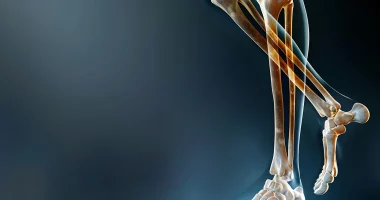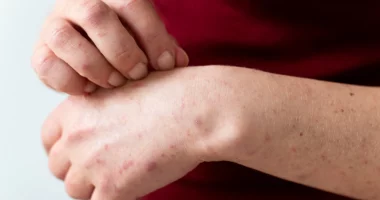Cervical radiculopathy, commonly called a pinched nerve, occurs when a neck’s nerve gets irritated or squeezed. This condition can cause significant pain and impact an individual’s daily life.
The good news is that cervical radiculopathy often gets better by itself over time. However, treatments like medication and physical therapy can assist make recovery faster and more comfortable. Physical therapy involves exercises and techniques to enhance neck strength and flexibility, while medication can help decrease pain and inflammation.
What is it?
This condition called Cervical radiculopathy impacts one of the nerves in the neck area.
The cervical spine is the part of your spine that runs from the base of your skull down to your shoulders. It is made up of seven bones called vertebrae, and several nerves travel through these bones.
When one of these nerves gets squeezed, irritated, or injured, it can lead to pain in the neck and sometimes spread to the shoulders, arms, or hands.
Causes
Cervical radiculopathy can arise from various causes, with different factors contributing to the condition.
Age-Related Causes
As people age, they often experience degenerative changes in their spine. This condition is called spondylosis. With aging, the disks in the middle of the cervical spine’s vertebrae can weaken, become displaced, or dry out, leading to stress on the nerves. This condition can cause symptoms such as pain and discomfort. Arthritis, which includes inflammation of the joints, can also develop with age and contribute to cervical radiculopathy. The seriousness of symptoms varies among people, and many can manage their discomfort with medication.
Another age-related issue is cervical foraminal stenosis, where the openings in the cervical spine through which the nerves pass become too small. This narrowing puts pressure on the nerves and is a typical cause.
Injury or Trauma
In individuals who are young, cervical radiculopathy might result from neck injuries or a slipped disk. A slipped disk, also known as a herniated disk, occurs when one of the cushioning disks between the vertebrae moves from its place and presses into the spinal canal. This pressure can affect the nerves, causing pain. Herniated disks can occur because of single injury or replication activities like bending, heavy lifting, or twisting. Cervical spine fractures can also lead to cervical radiculopathy by damaging the nerves.
Infection
Infections in the cervical spine can cause swelling or damage to the roots of the nerve, contributing to cervical radiculopathy.
Tumor or Cancer
In uncommon cases, cervical radiculopathy may be caused by tumors or cancer. A tumor growing in the cervical spine can exert pressure on the nerve roots, leading to symptoms of radiculopathy.
Sarcoidosis
Sarcoidosis is an uncommon condition that leads to swollen tissue in various areas of the body, including the cervical spine. Though it most commonly affects the lungs and skin, if it causes swelling in the cervical spine, it can lead to a pinched nerve. Other immune conditions, like rheumatoid arthritis, psoriatic arthritis, or lupus, can also cause similar issues.
Symptoms
Cervical radiculopathy typically presents with pain that can be dull or sharp, affecting the arm, neck, or both. Research has indicated that this discomfort may become more intense while sleeping. Additionally, movements that put pressure on the affected root of the nerve can exacerbate the pain.
Other common symptoms of cervical radiculopathy include weakness in the arm, hand, or shoulder. People may also experience numbness or tingling in the arm and hand. In some cases, there may be a loss of sensation in the arms, hands, or neck. Affected individuals might hold their head tilted to one side to alleviate discomfort or reduce pain.
Diagnosis
To diagnose cervical radiculopathy, a healthcare provider will first evaluate the individual’s symptoms and conduct a physical test. During this examination, the healthcare provider will check for symptoms of muscle weakness, sensory issues, and reflex responses.
Following the physical examination, the healthcare provider may recommend imaging tests like X-rays, MRI scans, or CT scans. These tests provide detailed images of the bones and vertebrae, helping to detect any issues that might be causing the symptoms.
Additionally, the individual might be required to undergo an examination called electromyography. This test measures electrical impulses in the muscles and nerves, helping healthcare providers determine if the nerves are functioning appropriately.
Treatment
There are various treatment options for this condition.
Collar
Healthcare providers may suggest wearing a cervical collar, or neck brace, which obstructs movement and allows the muscles of the neck to relax. These collars are usually comfortable, soft, and adjustable, but they are intended for short-term use only.
Physical Therapy Activities
Physical therapy is often the first-line treatment for cervical radiculopathy. During therapy sessions, a doctor guides the person through activities designed to strengthen muscles, decrease pain, and enhance range of motion. Traction, or decompression therapy, may also be used to stretch the neck area and decrease pressure, providing pain relief.
Medication
If therapy does not provide sufficient relief, medication may be suggested. Nonsteroidal anti-inflammatory drugs like ibuprofen and aspirin can help decrease inflammation and pain. In some cases, oral medicines may be suggested to relieve inflammation and swelling, or corticosteroids can be administered via injection. For severe pain, a healthcare provider might prescribe narcotics for a short period, but these should be used cautiously due to their potential for constipation and misuse.
Surgery
In serious episodes, surgery might be important to manage cervical radiculopathy. Surgical options involve:
- Artificial Disk Replacement: The problematic disk is removed and replaced with an unnatural one, offering more flexibility than ACDF.
- Posterior Cervical Laminoforaminotomy: An incision is made in the neck’s back to eliminate problematic disks, bone spurs, or tissues without requiring spinal fusion, thus retaining neck flexibility.
- Anterior Cervical Discectomy: The surgeon eliminates the problematic disk and fuses the spine with grafts, which may restrict movement of the neck.
When to consult a healthcare provider
If you have neck pain and think you may have this condition, it is important to see a healthcare provider. You should also seek medical help if your neck pain begins after an injury or trauma, like a fall or car accident.
When you visit the healthcare provider, they will enquire about your medical history and symptoms. They will perform a physical test to check for signs of the condition. Based on their findings, they may refer you for additional tests, like X-rays or MRI scans, to get a clearer picture of what’s happening with your spine. After the tests, the healthcare provider will discuss the best treatment alternatives to help you feel better.
Summary
Cervical radiculopathy, or a pinched neck’s nerve, causes pain, weakness, and tingling in the arms, neck, or hands. It can result from age-related changes, tumors, injuries, infections, or autoimmune conditions. Diagnosis involves a physical exam, imaging tests, and electromyography. Treatment options include wearing a cervical collar, medication, physical therapy, and in severe cases, surgery. If you suspect cervical radiculopathy or have neck pain after an injury, it’s important to see a healthcare provider for proper evaluation and intervention.









